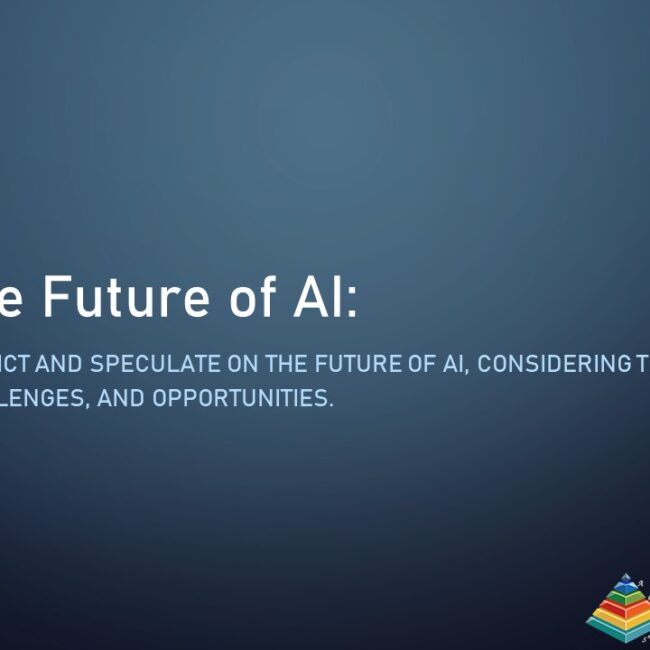
Pioneering the Future: AI in Self-Driving Cars, Drones, and Robotics
Introduction
Artificial Intelligence (AI) has been a driving force in revolutionizing industries, with significant impact in the fields of self-driving cars, drones, and robotics. In this blog, we will explore the innovative applications of AI in these domains, which are poised to transform transportation and automation in unprecedented ways.
AI in Self-Driving Cars
1. Sensor Fusion: Self-driving cars are equipped with various sensors like cameras, LiDAR, radar, and ultrasonic sensors. AI algorithms fuse data from these sensors to build a comprehensive understanding of the car’s surroundings.
2. Perception and Object Detection: AI helps self-driving cars identify and classify objects on the road, such as other vehicles, pedestrians, and traffic signs. Deep learning models process sensor data in real-time to make split-second decisions.
3. Path Planning and Control: AI is responsible for path planning, determining the car’s route, and controlling its movements. It takes into account traffic conditions, obstacles, and safety considerations.
4. Decision-Making: Self-driving cars use AI to make complex decisions like lane changes, merging onto highways, and handling unexpected situations, such as a pedestrian crossing the road.
Advantages:
- Safety: AI systems can reduce accidents caused by human error, which is a leading cause of traffic accidents.
- Efficiency: Self-driving cars can optimize traffic flow, reduce congestion, and improve fuel efficiency.
Challenges:
- Regulations and Liability: The legal and ethical frameworks for self-driving cars are still evolving.
- Security: AI systems need to be protected from hacking or malicious attacks.
AI in Drones
1. Autonomous Flight: Drones use AI for autonomous flight, navigation, and obstacle avoidance. These capabilities are crucial for applications like aerial photography, surveillance, and package delivery.
2. Computer Vision: AI-powered computer vision systems in drones enable object detection, tracking, and recognition. Drones can identify and follow objects or people on the ground.
3. Mapping and Exploration: Drones equipped with AI can explore and map areas that are challenging for humans, such as disaster-stricken zones, remote forests, or hazardous industrial sites.
4. Precision Agriculture: AI-powered drones are used in agriculture to monitor crop health, assess irrigation needs, and optimize pesticide usage.
Advantages:
- Versatility: Drones can perform various tasks, from monitoring wildlife to delivering packages.
- Efficiency: They can complete tasks quickly and access hard-to-reach areas.
Challenges:
- Air Traffic Management: Coordinating drone flights in populated areas is a complex challenge.
- Privacy: The use of drones raises concerns about privacy and surveillance.
AI in Robotics
1. Industrial Automation: In manufacturing and logistics, robots powered by AI perform tasks like assembly, sorting, and packaging. Machine learning enables robots to adapt to changing conditions.
2. Humanoid Robots: AI-driven humanoid robots are used in healthcare and customer service. They can assist with patient care and interact with customers in retail settings.
3. Autonomous Exploration: AI-equipped robots are employed in space exploration and deep-sea missions. They can navigate and make decisions in extreme environments.
4. Collaborative Robotics: AI enables robots to work alongside humans safely. Collaborative robots, or “cobots,” assist with repetitive and physically demanding tasks.
Advantages:
- Efficiency: Robots can work around the clock without fatigue or errors.
- Safety: Collaborative robots enhance worker safety and can handle hazardous tasks.
Challenges:
- Ethical Considerations: The introduction of AI robots in various roles raises ethical questions about their impact on employment and human-AI interactions.
- Interoperability: Ensuring that AI-powered robots can collaborate effectively with existing infrastructure and systems is a challenge.
Conclusion
AI is a transformative force in self-driving cars, drones, and robotics, driving innovation and reshaping industries. These technologies offer advantages such as improved safety, efficiency, and versatility. However, they also bring challenges that need to be addressed, including regulatory, security, and ethical considerations. As AI continues to advance, these fields will continue to evolve, offering solutions to previously insurmountable challenges and changing the way we transport goods, explore remote areas, and interact with machines.


